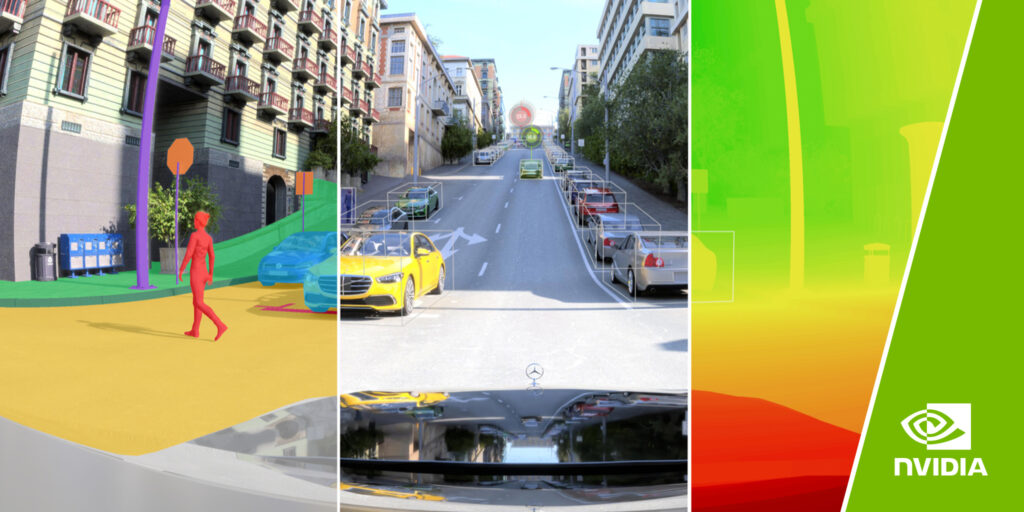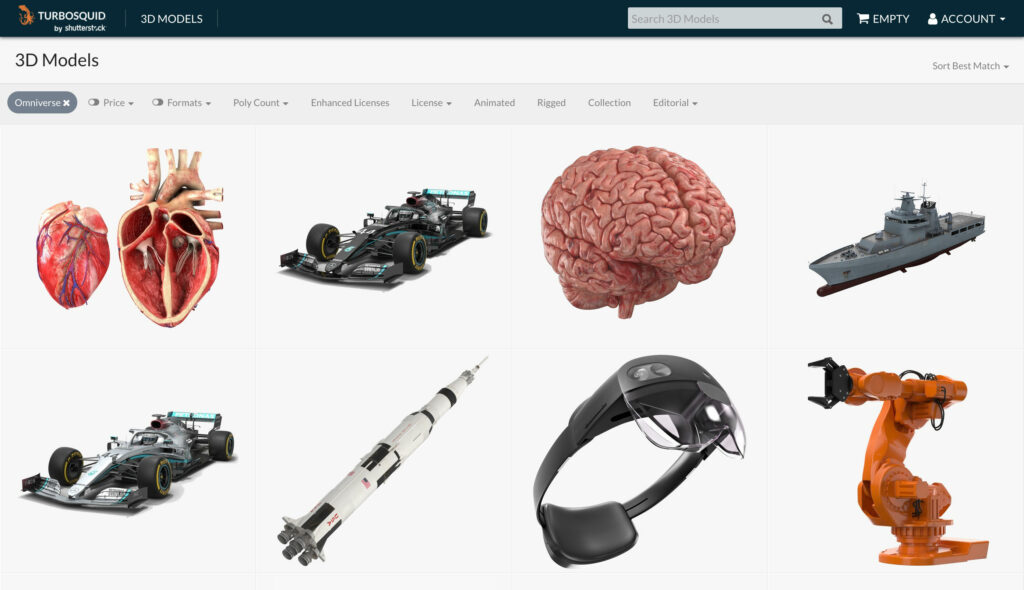Shutterstock is thrilled to announce the availability of thousands of 3D models compatible for use with NVIDIA Omniverse™, an accelerated 3D design and collaboration platform that seamlessly connects and enhances creator apps and workflows.
NVIDIA Omniverse makes it possible for globally dispersed designers, artists and creators to work together in real time across popular 3D applications in a shared virtual space, improving collaboration and saving time. Since Shutterstock works with countless designers and artists each day, we are proud to collaborate with NVIDIA to help these creators advance their work. For example, a visualization artist tasked with creating marketing materials for a new building can now instantly access an up-to-date version of the architecture firm’s building information modeling data instead of working in separate environments and having to request access over and over to ensure their content is accurate. And game designers and developers can use live-sync workflows to iterate on props, characters, textures and environments in real time.

NVIDIA Omniverse has been downloaded by over 100,000 individual creators. It gives creators a much-needed platform for rapid iteration in virtual worlds, but its usefulness would be limited without a library of compatible 3D models to let creators get started right away. This is where Shutterstock comes in; we’re supporting Omniverse with a vast library of “Omniverse-ready” 3D content, based on Universal Scene Description (USD) format, and we’ll be launching an object marketplace that integrates directly with Omniverse later this month. The bottom line? It will be considerably easier for creators to populate virtual spaces with 3D objects.
But we’re not stopping there. TurboSquid, which was acquired by Shutterstock in February 2021, has also developed a 3D modeling workflow specification called StemCell, which enables automated conversions of 3D content into the most widely used formats. These include USD (initially promoted by Pixar and adopted by other studios and companies to address 3D content fragmentation) and glTF, which is making its way into 3D e-commerce. StemCell’s technology will make it easy for TurboSquid contributors to submit (and be compensated for) Omniverse-compatible models instead of wasting time on complex conversions.

Standardization was a priority because of how notoriously difficult 3D content is to integrate into projects when the tool being used to design a 3D experience doesn’t match the tool in which 3D objects were originally modeled. As a result, studios often have to allocate significant time to refactoring or, in some cases, redoing 3D content from scratch when they work together on productions, since there’s no ubiquitous standard like a JPEG or GIF for 3D content.
By making 3D content as easy to work with as 2D images, TurboSquid’s conversion automation approach removes friction from creating in Omniverse and other environments. We already have more than 7,000 Omniverse-compatible models published on TurboSquid and are focused on building out a massive, standardized library of 3D content that can flow into any future application or experience where 3D models are required.
In other words, we’re not developing a Shutterstock standard, since the last thing the industry needs is yet another standard. Instead, we’re taking an agnostic approach based on trusted 3D standards developed by companies like Disney/Pixar and rolling those specifications into our marketplace.
Our goal is to speed up model creation and simplify the process of building 3D models for virtual worlds, AR/VR/XR experiences, and virtual production, and we believe that Shutterstock is in a unique position to help.


